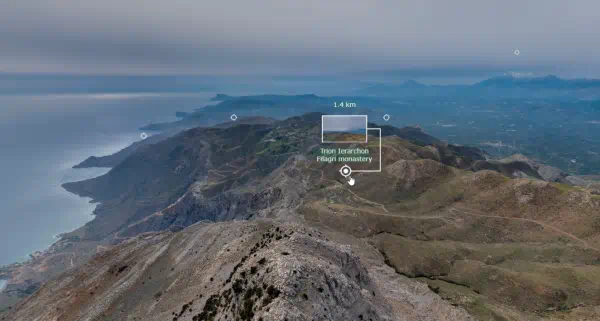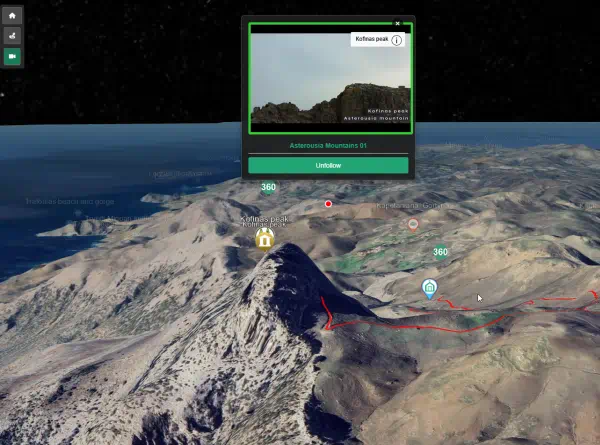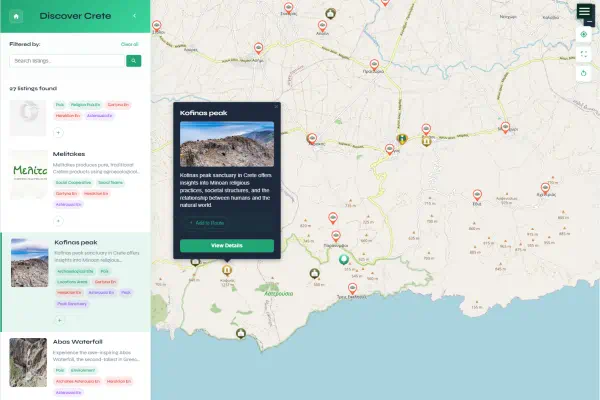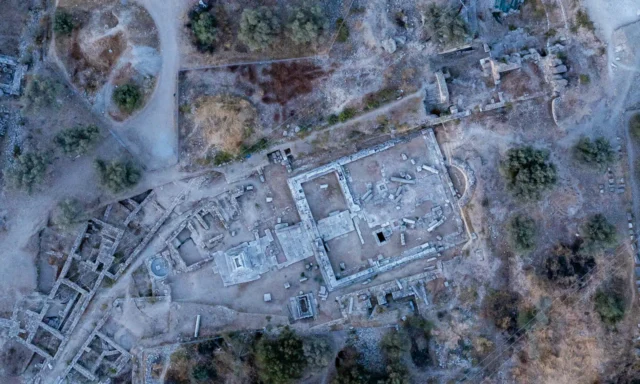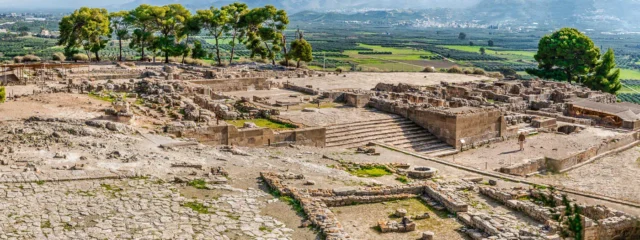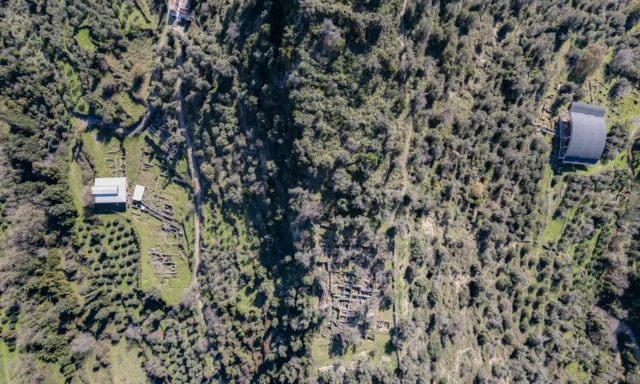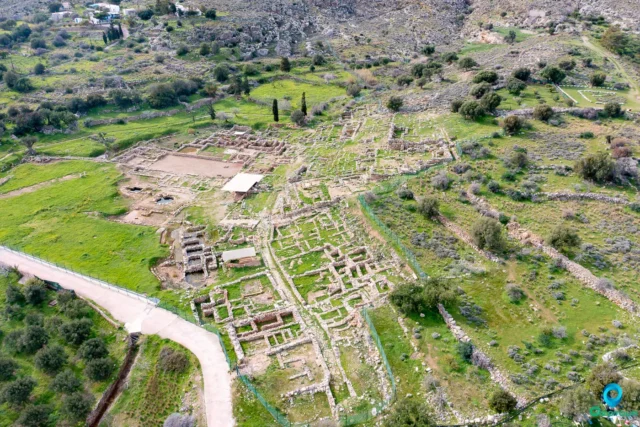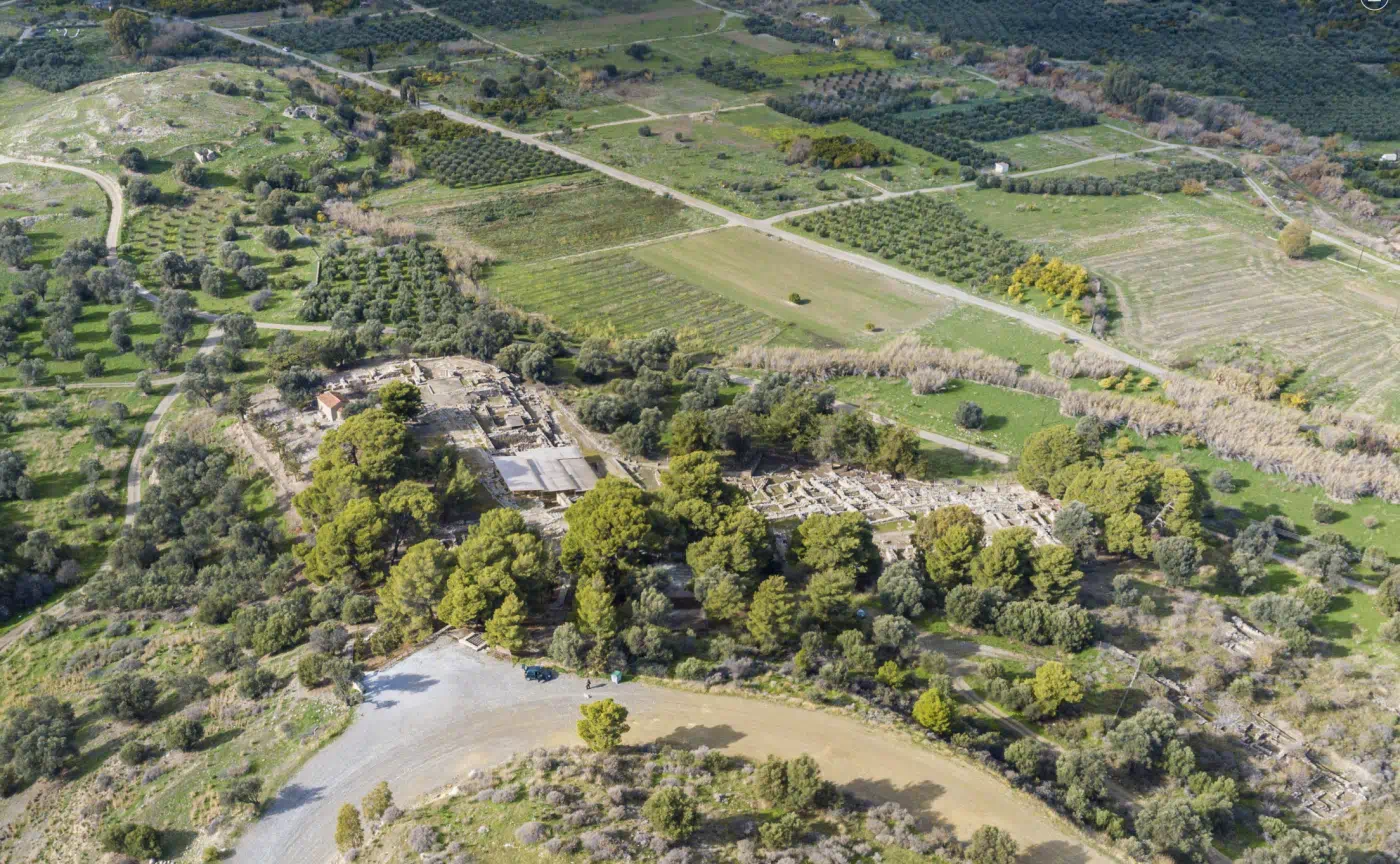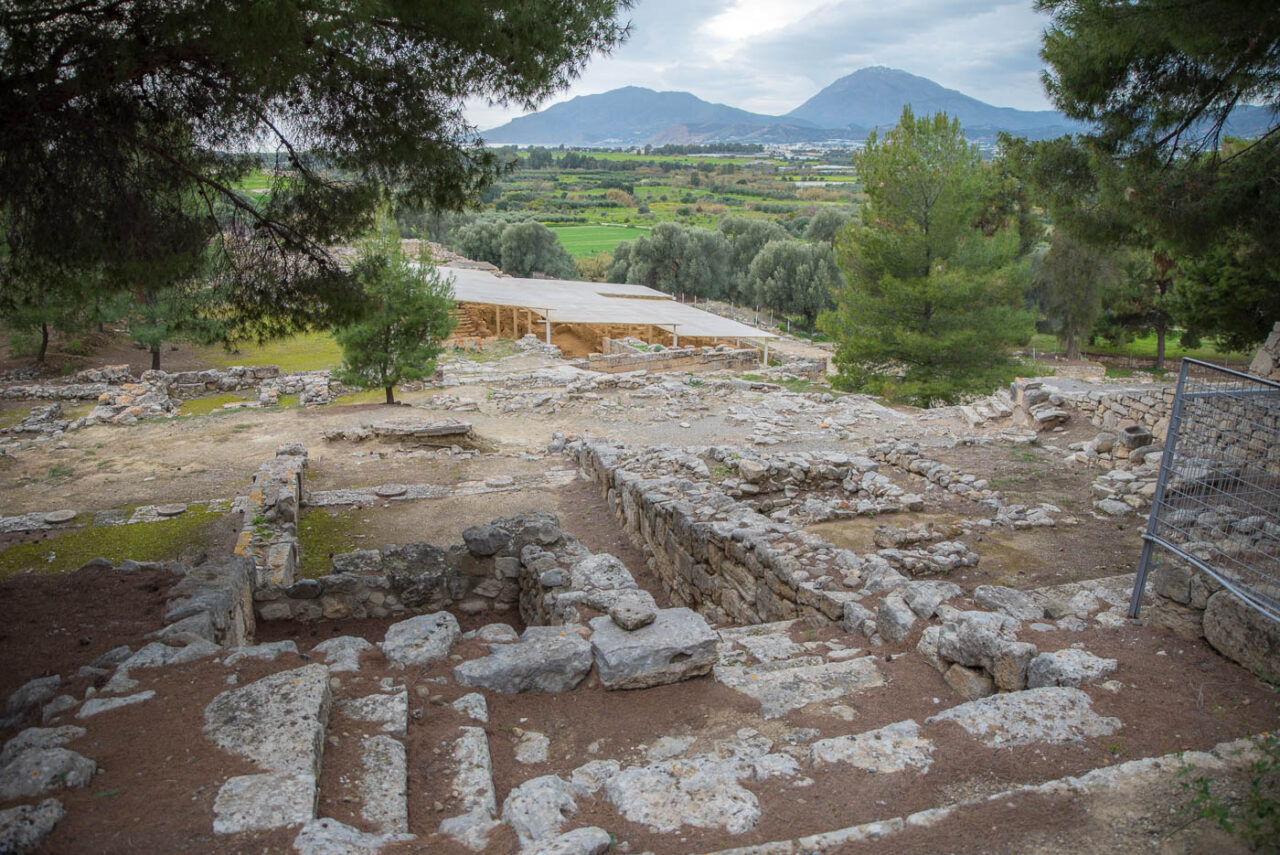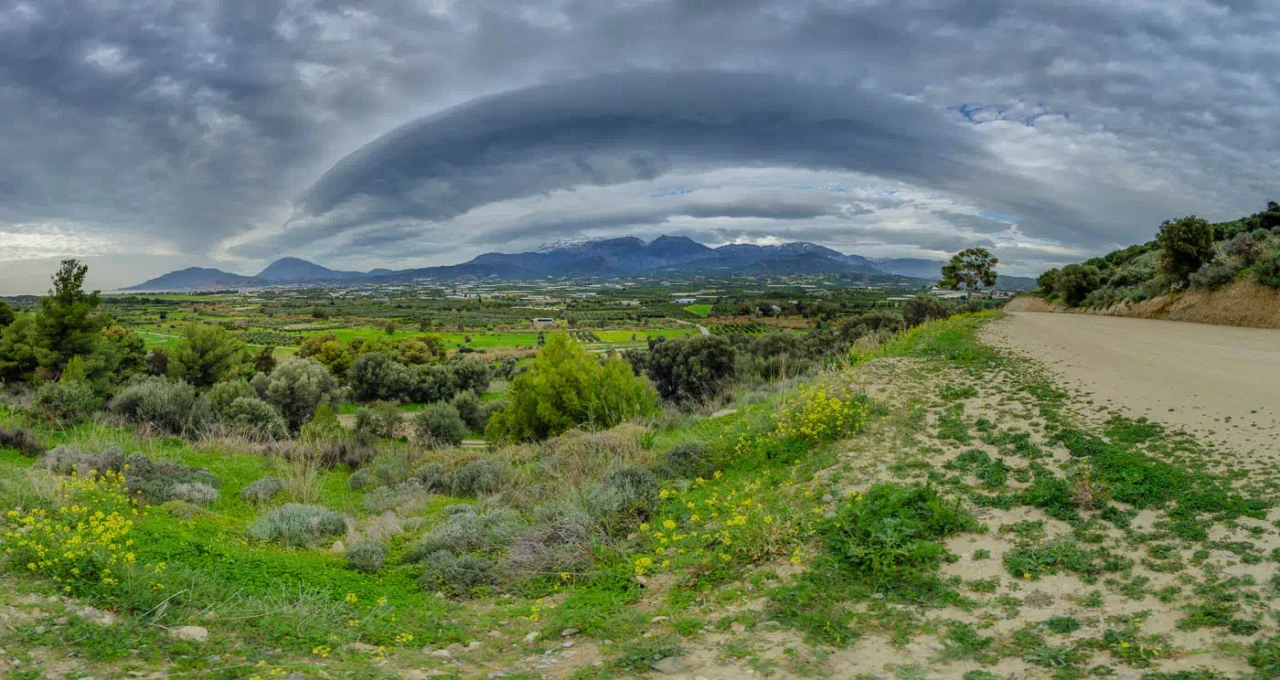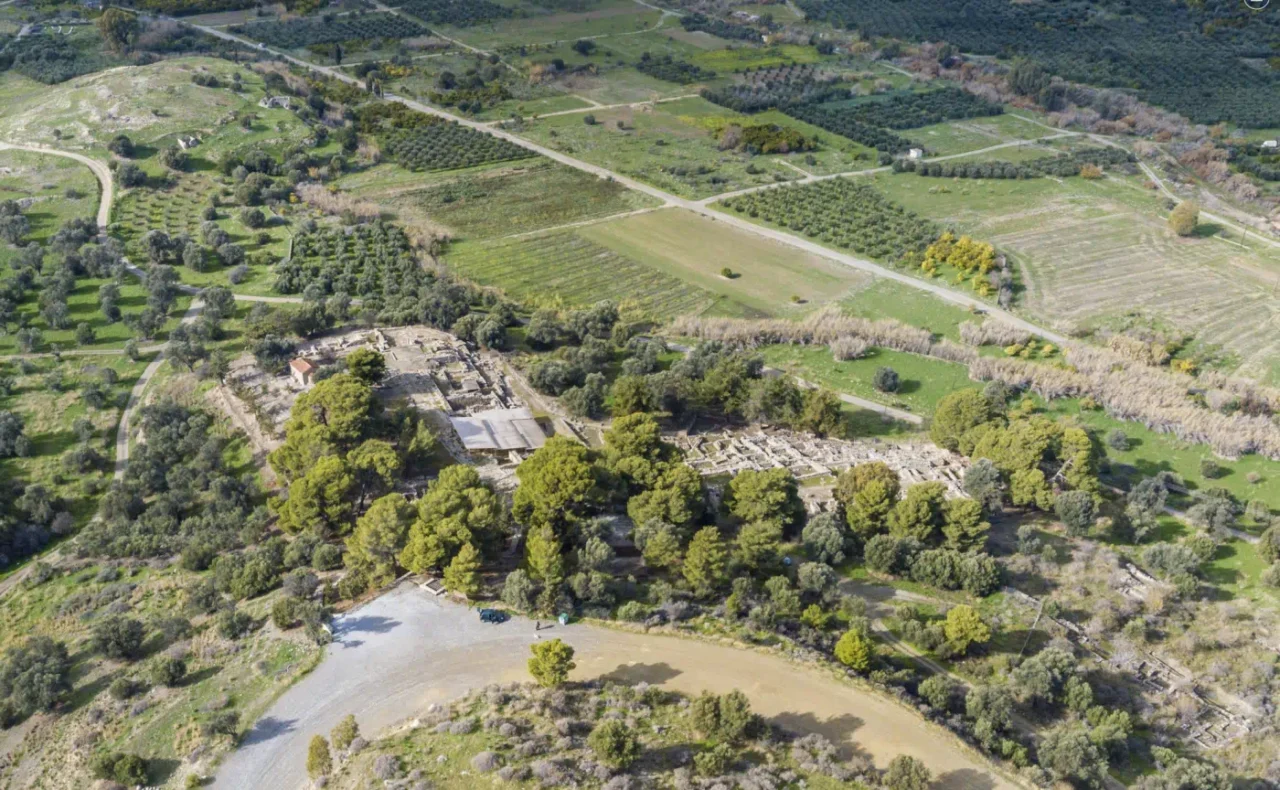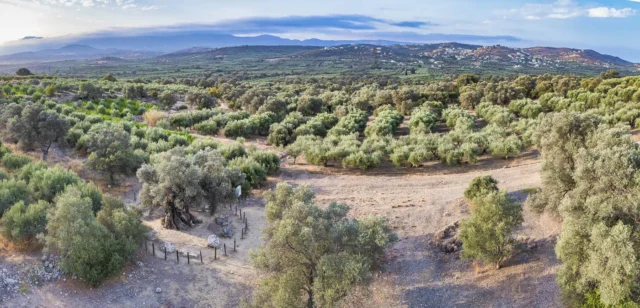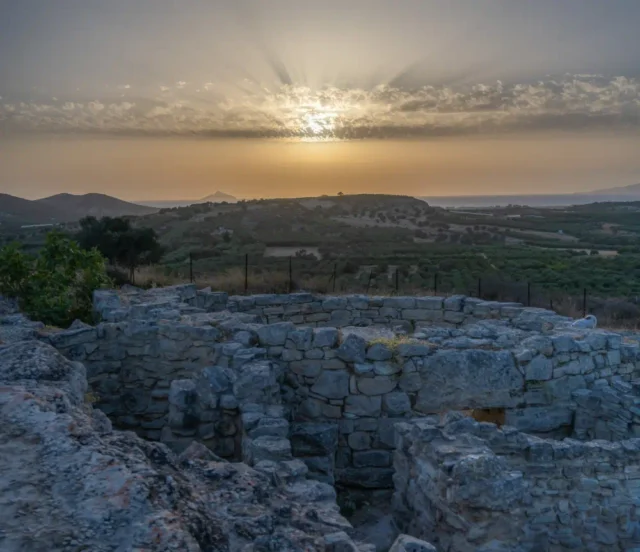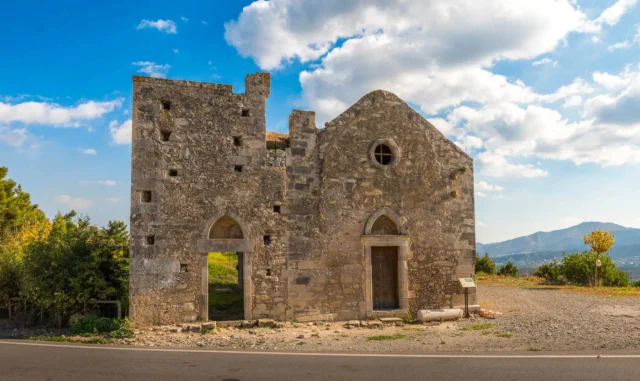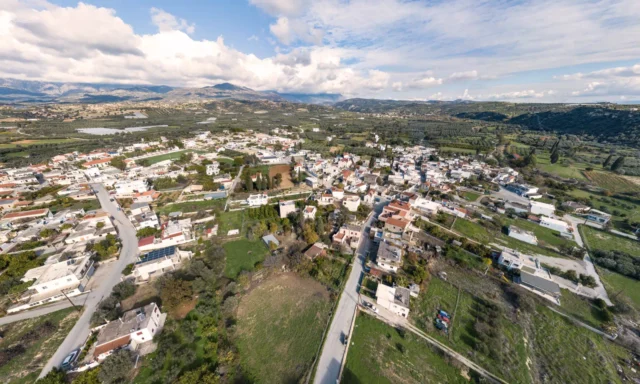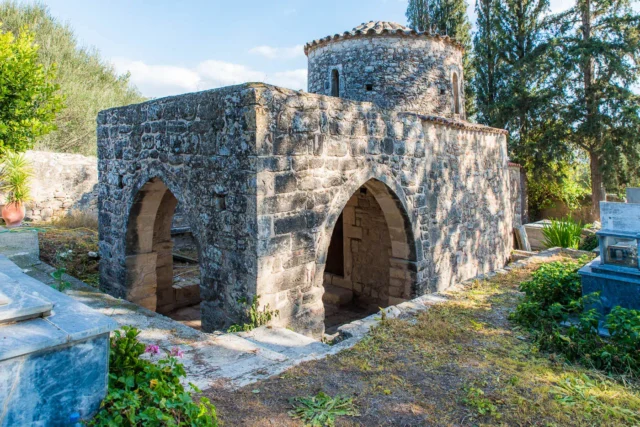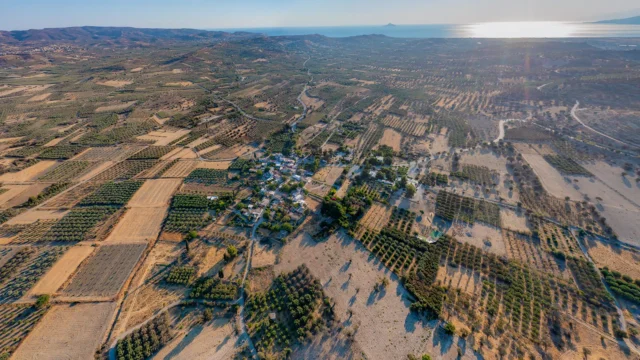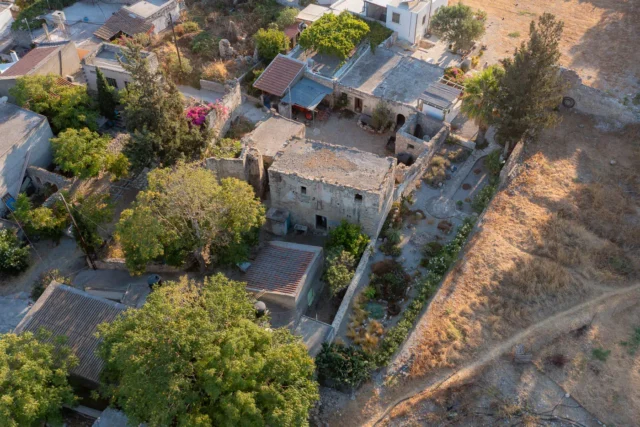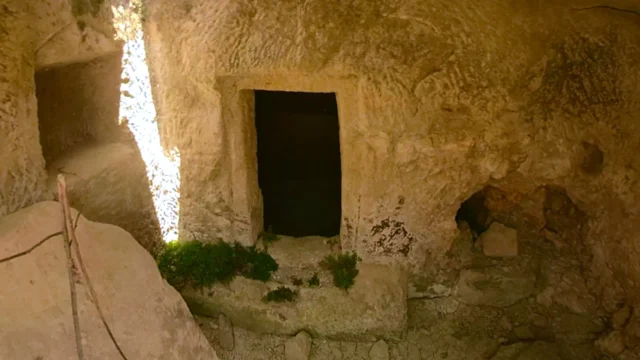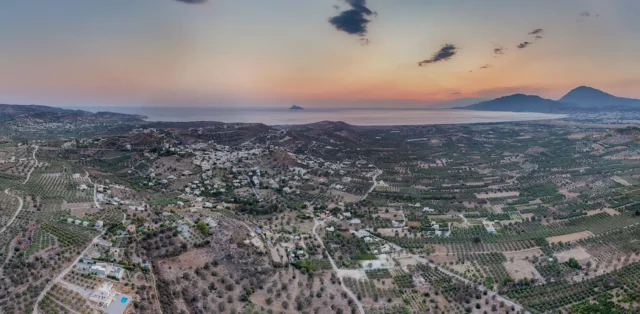Agia Triada is situated in the western part of the Mesara plain in south-central Crete, approximately 6 km from the Libyan Sea. It occupies the slope of a low hill, about 43 meters above sea level. The site belongs to a range of hills running northwest to southeast, with the palace of Phaistos located on the easternmost hill, making the two sites geographically close. Its position near the Hieropotamos river and the coast facilitated communication between the inland plain and coastal sites like the Kommos anchorage. Agia Triada sits strategically at a crossroads of ancient routes.
Historical Development Through the Bronze Age
Agia Triada was an important center throughout the second millennium BCE, showing continuous development and transformation.
Early Settlement and Growth (Early-Middle Bronze Age)
The site reveals a long history, with settlement evidence from the Early Bronze Age (roughly 3rd millennium BCE) and scattered earlier Neolithic materials suggesting an even longer human presence. During the Early Bronze Age, a cemetery centred on Tholos Tomb A indicates a settled community by the second half of the third millennium BCE. The subsequent Middle Bronze Age (roughly early 2nd millennium BCE) saw Agia Triada evolve further. The construction of Tholos Tomb B and rich pottery finds point to a thriving settlement. Although earlier structures are minimally preserved, the site held regional significance. A major turning point occurred starting around the 17th century BCE, with extensive building campaigns transforming Agia Triada.
Peak and Destruction (~1700-1450 BCE)
This phase marked both a zenith and a catastrophic end to a major period of the site’s life (~1700-1450 BCE).
Height of Activity: Around the 16th Century BCE
This period saw the construction of significant buildings like the Villa Reale, Casa del Lebete, and Casa delle Sfere Fittili, mainly on and around the hill of Hagios Georgios. The Villa Reale, sharing architectural features with palaces despite its smaller scale, indicates its importance as a potential power center. This era represents a high point in local craftsmanship, evidenced by objects preserved in the subsequent destruction.
Destruction and Disruption: Around the Mid-15th Century BCE
This flourishing period ended abruptly around the mid-15th century BCE with a violent fire destroying the settlement. Major buildings were affected, marking a significant interruption across Crete (except Knossos). Valuable objects found in destruction levels (copper ingots, relief vases) underscore the suddenness of the event.
Reoccupation and Transformation (Late Bronze Age III)
Following the destruction, Agia Triada was reoccupied and underwent significant changes, including the emergence of Mycenaean influence.
Signs of Renewal: Later 15th Century BCE
The later 15th century BCE showed signs of reoccupation. The Casa delle Sfere Fittili might have been reoccupied, and some former residences possibly converted into shrines (“cult of the ruins”). Limited building occurred, including possible ritual platforms. This coincides with a prominent Mycenaean presence at Knossos.
New Monumentality and Mycenaean Influence: Early 14th Century BCE
A new phase of monumental building occurred. Three structures were erected on Hagios Georgios: Megaron ABCD, Stoa FG, and Sacello H, built over earlier ruins. Megaron ABCD’s form, comparable to mainland halls but incorporating local aspects, suggests Mycenaean elite influence. Edificio E was also built. The architecture of this period begins to exhibit a blend of local and Mycenaean features, indicating cultural hybridity.
Urban Restructuring and Continued Mycenaean Presence: Later 14th Century BCE
Major urban reorganization centred on creating the Agora court in the northern sector, requiring the razing of earlier buildings. New monumental structures bordered the Agora (Stoa dell’Agora, Edificio Nord-Ovest/P). Edificio Ovest (storage) was added late in this phase. This reflects a shift towards public spaces and large-scale storage. The urban plan, potentially influenced by Mycenaean citadels, marked Agia Triada’s transformation. The tomb containing the famous painted sarcophagus (dating ~1370–1360 BCE) was constructed during this period, further highlighting Mycenaean presence and ideology through its hybrid artistic elements. This phase may reflect Agia Triada’s rise as an independent regional center after Knossos’s decline.
Stability and Gradual Departure: 13th Century BCE
Agia Triada largely retained its late 14th-century BCE layout. Monumental buildings and northern storage areas remained key features. The site was peacefully abandoned sometime late in the 13th century BCE, suggested by the lack of destruction evidence and emptied buildings. Agia Triada had prospered as a major political and economic power during the 14th-13th centuries BCE.
Archaeological Exploration
The understanding of Agia Triada comes from over a century of archaeological work.
History of Excavations
Initial Identification and Early Campaigns (1900-1914 CE)
Luigi Pernier identified the site in June 1900 CE. Systematic excavations by the Italian Archaeological Mission began in May 1902 CE under Federico Halbherr. Roberto Paribeni directed from 1903-1905 CE, exploring the Villa Reale and parts of the cemetery (Tholos B, Tomb of the Painted Sarcophagus). Halbherr, assisted by Enrico Stefani, resumed direction, excavating areas like the Casa del Lebete. Extensive exploration of the northern settlement area occurred from 1910-1914 CE under Halbherr, Stefani, and Gaetano De Sanctis.
Later Excavation Phases (Post-1914 CE)
Limited work occurred mid-20th century CE (L. Banti). Excavations between 1970-1976 CE (D. Levi, C. Laviosa) did not focus on the northern settlement. A new systematic cycle began in 1977 CE under Vincenzo La Rosa, aiming to clarify the site’s overall chronology and urban development from the Early Bronze Age onwards, including re-exploring the cemetery.
Research Methods and Interpretations
Ongoing research involves meticulous study of early excavators’ archives (notebooks, sketches, letters, photos) dispersed in Greece and Italy. Comparing old and new data is crucial for interpreting contexts, especially the Late Bronze Age III remains in the northern settlement area. Studies focus on aspects like domestic cult practices (e.g., Casa VAP finds) and architectural functions (e.g., storage capacity of northern buildings). Debates continue on precise dating of some structures (e.g., Megaron ABCD, Stoa FG) and the function of features like the Muraglione a Denti (boundary wall). Scholars like Santo Privitera have used archival data to reassess buildings. The overall interpretation points to Agia Triada’s rise as a major economic and religious center, particularly after Knossos’s decline, controlling significant agricultural resources.
Key Architectural Features and Areas
Agia Triada comprises distinct architectural zones and monumental structures reflecting its complex history.
The Minoan Villa Complex
Located on the hill of Hagios Georgios, this complex dates mainly to the period before the mid-15th century BCE destruction. The Villa Reale, a multi-storied L-shaped structure, served administrative purposes. Despite being smaller than palaces, it shared features like residential suites, light-wells, ashlar masonry, and wall paintings. A court with a theatre-like structure suggests ceremonial functions.
The Northern Settlement Area (Village)
Located north of the main complex and west of the Agora, this area contained buildings of generally more modest scale, though some were substantial. It saw continuous construction from around the 17th century BCE to the 13th century BCE.
Notable Buildings (Casa VAP, CCD, etc.)
Key structures include the Casa del Lebete (source of Linear A tablets), Casa delle Sfere Fittili, Casa delle Camere Decapitate (CCD – with unique door-less spaces interpreted as silos, later 14th century BCE), and the large Casa dei Vani Aggiunti Progressivamente (Casa VAP – progressively enlarged in the Late Bronze Age III period).
Storage Facilities
Several buildings in this sector, particularly those constructed or modified in the later 14th century BCE (CCD, Edificio Nord-Ovest/P, Edificio Ovest), functioned as large-scale granaries or silo complexes, indicating centralized control over agricultural surplus.
Monumental Structures on Hagios Georgios
Several major buildings were erected on the hill, primarily during the 14th century BCE over the ruins of the earlier villa complex. These include Megaron ABCD (large, Mycenaean-influenced hall), Stoa FG (linked to ceremonies), and Sacello H (a distinct sacred building).
The Bastione and Structures Around the Agora
The Bastione, south of the village sector, was a massive rectangular building (warehouse/granary), built late 16th century BCE, destroyed mid-15th century BCE, and rebuilt later 14th century BCE. The large Agora court, created in the later 14th century BCE, was bordered by monumental buildings like the Stoa dell’Agora (east side, with portico and storerooms) and the Edificio Nord-Ovest/P complex (north side).
Evidence of Tombs
The site includes significant burial structures. A large tholos tomb was excavated in the cemetery area. Tholos Tomb B is another circular tomb. Tomb 4 is famous for containing the Painted Sarcophagus and the Queen Tiyi scarab. Tomb 5 (Tomba degli Ori) received contents moved from Tomb 4.
Significant Artifacts and Finds
Excavations have yielded numerous important artifacts shedding light on Agia Triada’s culture, administration, and connections.
The Renowned Agia Triada Sarcophagus
A unique painted limestone burial chest (~1370–1360 BCE) found in Tomb 4. Its intricate scenes depicting religious rituals are crucial for understanding Aegean beliefs and demonstrate the blend of Minoan and Mycenaean artistic traditions during the Late Bronze Age III period.
Linear A Tablets
A significant cache of 140 clay tablets inscribed in the undeciphered Minoan Linear A script was found, primarily in the mid-15th century BCE destruction level of the Villa Reale and Casa del Lebete, providing evidence of administration.
Serpentine Relief Vases
Impressive stone vases carved with relief scenes (Boxer Rhyton, Harvester Vase, Chieftain Cup), dated stylistically to the 16th century BCE, were found in the mid-15th century BCE destruction layer.
Wall Painting Fragments
Fragments from both the pre-1450 BCE era and the Late Bronze Age III period have been discovered, offering insights into artistic styles, cultural connections, and potential Mycenaean influence. Procession and sacrifice scenes from Casa VAP are particularly noteworthy.
The Scarab of Queen Tiyi
A scarab seal of Egyptian Queen Tiyi (14th century BCE) found in Tomb 4 indicates contacts between Agia Triada and Pharaonic Egypt.
Ritual Objects (Snake Tubes)
Tubular ceramic stands (“snake tubes”), associated with religious practices, were found within Sacello H and Casa VAP, suggesting ritual activities in these spaces.
Pottery and Chronology
Various pottery styles (Kamares ware, subsequent Bronze Age styles) provide chronological markers. Specific shapes found in Casa VAP (globular tripod pithoi, kylikes) suggest the final abandonment of parts of the site occurred very late in the 13th century BCE or possibly early 12th century BCE.
Conservation and Current Status
Agia Triada remains a vital archaeological site facing challenges common to ancient ruins.
Alterations to Architectural Remains
The physical remains have undergone changes since excavation, including demolition of later walls, early restorations, wartime damage, and natural decay. These alterations complicate the interpretation of the original structures.
Location of Recovered Artifacts
Many significant finds are housed in the Archaeological Museum of Heraklion. However, due to early excavation practices, much fragmentary pottery, particularly from the Late Bronze Age III period, was not preserved, limiting potential research.
Continued Archaeological Research and Significance
Agia Triada is crucial for understanding the Aegean Bronze Age, especially Minoan-Mycenaean interactions on Crete. Ongoing research, combining fieldwork and archival study, aims to clarify chronology, building functions, and the site’s regional role.
Summary: Key Points
- Location: Strategic position in western Mesara plain, Crete, near Phaistos and coast.
- Chronology: Occupied from Early Bronze Age (~3rd millennium BCE) to peaceful abandonment late 13th century BCE. Key periods ~1700-1450 BCE and ~14th-13th centuries BCE.
- Significance: Major administrative and likely religious center. Shows development from Minoan villa phase through destruction (~1450 BCE) to Late Bronze Age III monumental reorganization with significant Mycenaean influence. Important evidence for administration (Linear A), religion (Sarcophagus, shrines), and economy (storage).
- Current Status: Important, actively researched archaeological site; finds primarily in Heraklion Museum. Site integrity affected by past alterations and natural processes.

